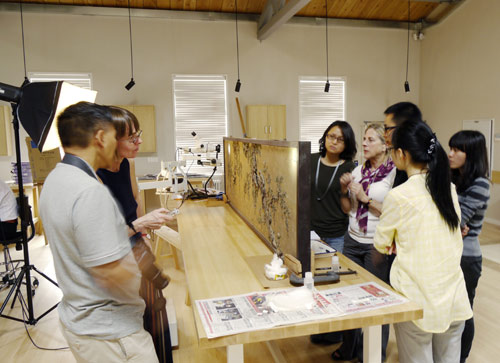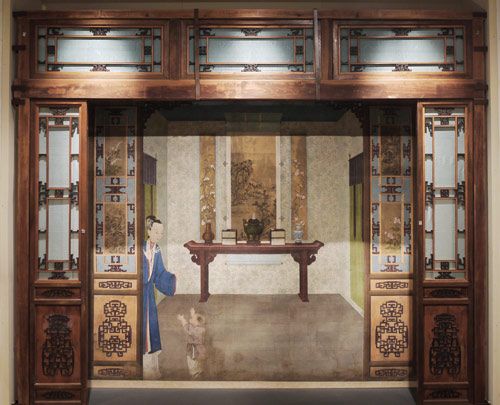 Traveling Exhibitions
Traveling Exhibitions Traveling Works of Art
Traveling Works of Art Conservation Projects
Conservation Projects Excavations
Excavations Fellows
Fellows Exchanges & Collaborations
Exchanges & Collaborations Multiple Items
Multiple Items
The Met Around the World presents the Met’s work via the global scope of its collection and as it extends across the nation and the world through a variety of domestic and international initiatives and programs, including exhibitions, excavations, fellowships, professional exchanges, conservation projects, and traveling works of art.
The Met Around the World is designed and maintained by the Office of the Director.
Traveling
Exhibitions
The Met organizes large and small exhibitions that travel beyond the Museum's walls, extending our scholarship to institutions across the world. See our national and international traveling exhibition program from 2009 to the present.
Traveling
Works of Art
The Met lends works of art to exhibitions and institutions worldwide to expose its collection to the broadest possible audience. See our current national and international loans program.
Conservation
Projects
The preservation of works of art is a fundamental part of the Met's mission. Our work in this area includes treating works of art from other collections. See our national and international conservation activities from 2009 to the present.
Excavations
The Met has conducted excavations for over 100 years in direct partnership with source countries at some of the most important archaeological sites in the world. Today we continue this tradition in order to gain greater understanding of our ancient collections. See our national and international excavation program from the Met's founding to the present.
Fellows
The Met hosts students, scholars, and museum professionals so that they can learn from our staff and pursue independent research in the context of the Met's exceptional resources and facilities. See the activities of our current national and international fellows.
Exchanges & Collaborations
The Met's work takes many forms, from participation in exchange programs at partnering institutions and worldwide symposia to advising on a range of museum issues. These activities contribute to our commitment to advancing the work of the larger, global community of art museums. See our national and international exchange program and other collaborations from 2009 to the present.
 Section of Qianlong Garden in the Forbidden City. Photograph courtesy of the Palace Museum.
Section of Qianlong Garden in the Forbidden City. Photograph courtesy of the Palace Museum. Mecka Baumeister (Conservator) with colleagues at the conservation studio and training facility for the Qianlong Garden Project. Photograph courtesy of the Palace Museum.
Mecka Baumeister (Conservator) with colleagues at the conservation studio and training facility for the Qianlong Garden Project. Photograph courtesy of the Palace Museum. Interior scene with architectural woodwork from the Supreme Chamber for Cultivating Harmony (Yanghe Jingshe) in the Qianlong Garden, installed in “The Emperor's Private Paradise” exhibition at the Metropolitan Museum. Lent by the Palace Museum, Beijing. Photograph courtesy of the Palace Museum.
Interior scene with architectural woodwork from the Supreme Chamber for Cultivating Harmony (Yanghe Jingshe) in the Qianlong Garden, installed in “The Emperor's Private Paradise” exhibition at the Metropolitan Museum. Lent by the Palace Museum, Beijing. Photograph courtesy of the Palace Museum.
Palace Museum - World Monuments Fund Qianlong Garden Conservation
China, U.S.A.
2002–2019
While the site is under conservation, the loan exhibition, The Emperor's Private Paradise: Treasures from the Forbidden City, provided the unique opportunity to study significant pieces of furniture, architectural elements, trompe l'oeil wall paintings, and religious and decorative art at the Metropolitan Museum (February–May, 2011), one of the American venues.
Another important component of this project is the establishment of the first training program and facility in 2010 in the Forbidden City dedicated to the conservation of Chinese furniture and historic interiors, to benefit the Palace Museum and to serve as an international resource for the field.
Made possible by World Monuments Fund.


